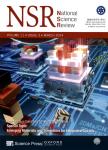Liquid metal biomaterials: translational medicines,challenges and perspectives
作者机构:Department of Biomedical Engineering School of Medicine Tsinghua University Beijing Tsinghua Changgung HospitalSchool of Clinical Medicine Tsinghua University Shanghai World Foreign Language Academy Beijing Advanced Innovation Center for Biomedical Engineering School of Engineering MedicineBeihang University Beijing Key Lab of Cryo-Biomedical Engineering and Key Lab of CryogenicsTechnical Institute of Physics and Chemistry Chinese Academy of Sciences
出 版 物:《National Science Review》 (国家科学评论(英文版))
年 卷 期:2024年第11卷第2期
页 面:264-284页
核心收录:
学科分类:07[理学] 070205[理学-凝聚态物理] 08[工学] 080501[工学-材料物理与化学] 0805[工学-材料科学与工程(可授工学、理学学位)] 080502[工学-材料学] 0702[理学-物理学]
基 金:supported by the National Natural Science Foundation of China (51890893) the Beijing National Science Foundation (KZ72016801) partially supported by the Tsinghua University Initiative Scientific Research Program of Prevision Medicine
主 题:liquid metal biomaterials translational medicine clinical device healthcare therapeutics
摘 要:Until now, significant healthcare challenges and growing urgent clinical requirements remain incompletely addressed by presently available biomedical materials. This is due to their inadequate mechanical compatibility, suboptimal physical and chemical properties, susceptibility to immune rejection, and concerns about long-term biological safety. As an alternative, liquid metal(LM) opens up a promising class of biomaterials with unique advantages like biocompatibility, flexibility, excellent electrical conductivity,and ease of functionalization. However, despite the unique advantages and successful explorations of LM in biomedical fields, widespread clinical translations and applications of LM-based medical products remain limited. This article summarizes the current status and future prospects of LM biomaterials, interprets their applications in healthcare, medical imaging, bone repair, nerve interface, and tumor therapy, *** to translate LM materials into medicine and obstacles encountered in practices are *** that, we outline a blueprint for LM clinics, emphasizing their potential in making new-generation artificial organs. Last, the core challenges of LM biomaterials in clinical translation, including bio-safety,material stability, and ethical concerns are also discussed. Overall, the current progress, translational medicine bottlenecks, and perspectives of LM biomaterials signify their immense potential to drive future medical breakthroughs and thus open up novel avenues for upcoming clinical practices.



